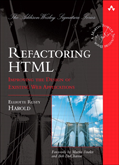How to Blog Anonymously
Monday, April 9th, 2007Sometimes you can write more freely if you’re anonymous. You may want to talk about really personal and embarrassing things. You may want to talk about subjects that embarrass and upset governments with armed police or large corporations with lots of lawyers. Sometimes you just don’t want your employees to know their boss enjoys knitting tea cozies on the weekends. Sometimes you may not even care all that much about anonymity, but just want to establish different identities for different activities, much like novelists use pseudonyms when switching genres. It is absolutely possible to blog anonymously, and many people do it.
How much trouble it is depends on your security needs and paranoia level. A lot depends on what’s likely to happen if your anonymity is breached. For instance are you worried about being:
- Laughed at?
- Fired?
- Arrested?
Obviously if you think the CIA is going to be hunting you down, then you’ll take anonymity somewhat more seriously than if you’re merely worried your brother might make fun of your Ashlee Simpson fan site.
(more…)
